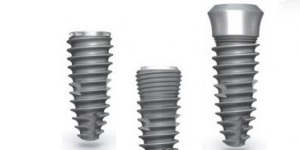
خصوصیات فیزیکی و مکانیکی مواد سازنده ایمپلنت ها
2015-09-15
تشخيص اشتباه در دندانپزشکی
2015-09-15The lymphatic system is a part of the overall lymphoid system of the body and a component of the immune system of the body. It is an accumulation of tiny channels or tubules with small nodular structures called lymph nodes interconnecting them. The system functions by returning fluids to the bloodstream from the various tissues of the body. A filtrate of the blood plasma flows out of the capillaries into the surrounding tissues, where it becomes extracellular
fluid
It is eventually picked up by the lymphatic vessels or tubules. The extracellular fluid, now referred to as lymphatic fluid, flows through tubules, then through nodes, back through tubules, and possibly through some more nodes. It finally empties into the venous system at the junction of the internal jugular and subclavian veins in the root of the neck and travels back to the heart. This kind of fluid circulation repeats itself continually. The lymph nodes act as filters for the fluids, and the lymphocytes produced within the lymph nodes combat infections that might spread through the lymphatic channels. Most tissues, including the pulp of the teeth, have lymph vessels in them. The distribution of these vessels has been well determined, and this information can be used as a diagnostic tool in the study of oral infections and as a means of slowing the spread of cancers
We will now examine the distribution pattern of these channels and nodes and discover how they relate to the head and neck area .some of the major groups of nodes in the head and neck. The nodes are grouped together into small clusters, which are all interconnected by channels. Each group drains fluids from certain structures or tissue areas, which explains why lymph nodes are involved in combating infections in areas of the body. A sore throat, for example, can be followed by tenderness in the neck and finally a tender lump in that area. In such an instance the infection from the throat has spread through the lymph channels and nodes behind the throat wall known as retropharyngeal nodes. From there it travels through lymph vessels until reaching the first group of lymph nodes in the neck known as upper deep cervical nodes. The lymphocytes in the node have begun to combat the infection and also have started to multiply, causing the node to become enlarged and tender. If the infection is successfully combated in that node, it will subside; however, if the infection is great, it may spread through that lymph node or nodes and on to the next node or group of nodes






